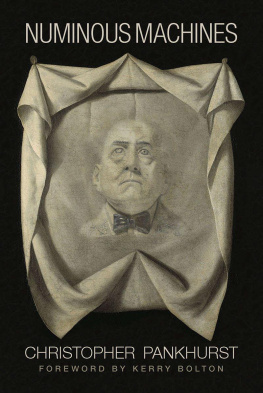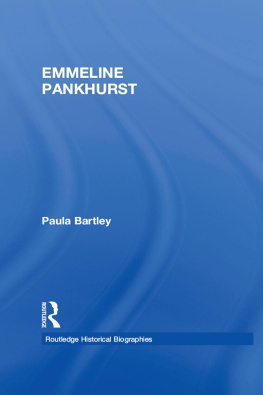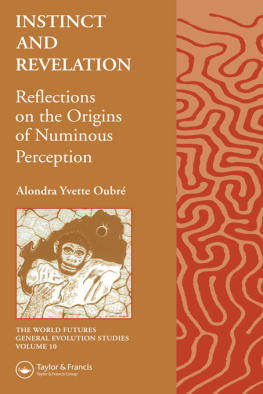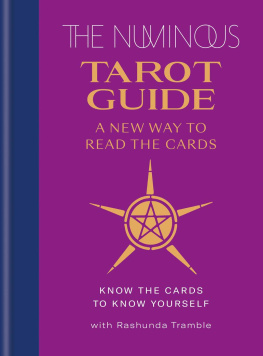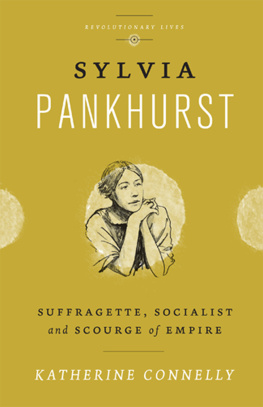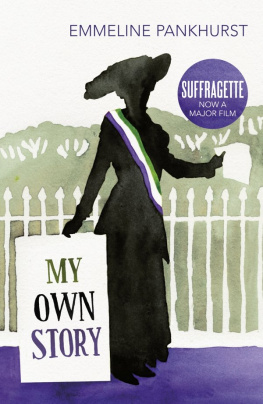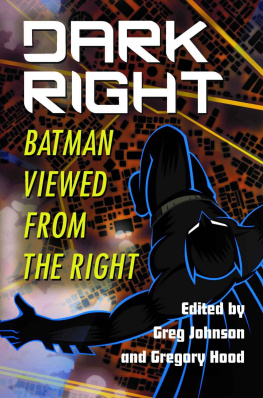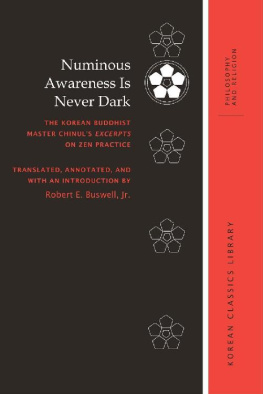N UMINOUS M ACHINES
by
C HRISTOPHER P ANKHURST
F OREWORD BY K ERRY B OLTON
Counter-Currents Publishing Ltd.
San Francisco
2017
Copyright 2017 by Christopher Pankhurst
All rights reserved
Cover image:
Mashup of Francisco de Zurbarn, The Veil of Veronica , ca. 16351640, oil on canvas, Nationalmuseum, Sweden & Charles Krafft, Aleister Crowley Hot Water Bottle , 2010, porcelain, private collection
Cover design by
Kevin I. Slaughter
Published in the United States by
C OUNTER- C URRENTS P UBLISHING L TD.
P.O. Box 22638
San Francisco, CA 94122
USA
http://www.counter-currents.com/
ISBNs
Hardcover Edition: 978-1-940933-44-3
Paperback Edition: 978-1-940933-45-0
Electronic Edition: 978-1-940933-46-7
Library of Congress Cataloging-in-Publication Data
Names: Pankhurst, Christopher, 1973- author.
Title: Numinous machines / by Christopher Pankhurst ; foreword by Kerry
Bolton.
Description: San Francisco : Counter-Currents Publishing Ltd., 2017. |
Includes bibliographical references and index.
Identifiers: LCCN 2016014670 (print) | LCCN 2016029936 (ebook) | ISBN
9781940933467 (e-book) | ISBN 9781940933443 (hardcover : alk. paper) |
ISBN 9781940933450 (pbk. : alk. paper)
Classification: LCC PS3616.A3695 (ebook) | LCC PS3616.A3695 A6 2017 (print) |
DDC 814/.6--dc23
LC record available at https://lccn.loc.gov/2016014670

Charles Krafft, Aleister Crowley Hot Water Bottle, 2010, porcelain, private collection
C ONTENTS
F OREWORD
This collection of Christopher Pankhursts essays willor shouldprovide the groundwork from which springs an ongoing and lively dialectic for many years, one that has the potential to redefine much about the New Right in the Anglosphere and further afield. What Pankhurst has achieved is the articulation of a philosophy that is quite unique at a time when one might wonder whether there is anything unique left to say. Like any genuine work of philosophy, it prompts many questions, and therefore provokesliterally provokes one to think, and in directions that are usually left derelict by the Right.
Pankhursts intention is to describe the numinousthe spiritas the inspiration behind history and culture. He starts with Oswald Spengler, an eminently worthy beginning, augmented by Francis Parker Yockey. Explaining the fundamentals of Spenglers doctrine of culture morphology and Yockeys doctrine of culture distortion, Pankhurst makes the important point that the maladies of the Western Civilization ascribed to Jewish influences by Yockey, are symptoms, not causes. Pankhurst deals with the problem of what Spengler calls the Second Religiousness: an attempt to revive the numinous when people tire of materialism. There is no sign of it. It seems Western Civilization missed the proverbial boat in terms of a revival of any type, and additionally that the imperium that normally appears as the last hurrah of a Civilization on the world historical stage, according to Spengler (and Yockey) was distorted instead into a US-led money empire: that is, instead of new Caesars in the Spenglerian sense overthrowing the rule of money, money won, and Western Civilization will continue to devour itself without a revivalist interregnum.
Pankhurst raises the question as to whether there is anything of Western Civilization left to save, and even whether it should be saved. What is more likely is a post-Western culture. Pankhurst directs his attention towards what the new forms of a post-Western culture might be, starts with music, and moves on to the visual arts. As an end aim, to revive the tradition of a bygone High Culture is to reanimate a corpse and claim victory by creating a zombie. Actually Spengler also dealt with such matters, and stated that Western Civilization has nothing more great to create in the arts. Beyond this, Pankhurst sees the continuance of the Faustian soul after the demise of the West as a timeless spirit that can manifest a new culture that Pankhurst suggests will most readily grow from small rural communities, eschewing the decay of the cosmopolitan, rootless megalopolis. The search is for the way of uncovering the sources that will impel the new culture: Pankhurst considers the transcendence of Nietzsche, the primal spirit of Sibelius, the sublimity of the composer Arvo Prt, and the composer James MacMillan, who relates the saga of his fellow Scott, the witch Isobel Gowdie. The chapter on Giacinto Scelsi, a reclusive aristocrat, should prompt the reader to listen to this obscure composer who, like Prt, provides a glimpse of a post-Western culture. Pankhurst says of Scelsi: His music expresses the darker, more unnerving aspects of mysticism with which most people are uncomfortable. It is at once beautiful and threatening. Perhaps this is precisely what the numinous dichotomy of a post-Western culture will be: beautiful and threatening; a new dialectic.
David Myatt will probably not be familiar to most readers, but whether as a Satanist, a National Socialist, a Muslim, or a follower of the Numinous Way, his life-quest has been in search of the numinous, and he also developed a neo-Spenglerian morphology of history called Aeonics, reflecting the nexus between casual and acausal. Drawing on an array of subjects such as novelist Alan Garner, who writes of the mythic landscape, visual artist Damien Hirst, Coomaraswarmy, Crowley, Austin Osman Spare, and Mishima, Pankhurst considers a gamut of philosophical questions from life to death, posing seldom asked but crucial questions on the destiny of the European after the Wests demise. The book will hopefully become a seminal source for a Right that really is New.
Kerry Bolton
Summer Solstice, 2017
A UTHORS N OTE
Only two of the works in this volumethe stories The Yoke and The Grey Woodare previously unpublished.
The following essays were first published at Counter-Currents/ North American New Right : Music of the Future, Parsifal and the Possibility of Transcendence, Tapiola : Sibelius and the God of the Wood, The Confession of Isobel Gowdie , Giacinto Scelsi: A Soundtrack for Radical Traditionalism, God Has Become Cancer: Damien Hirst, Religion, and Death, and The Presence of the Past: From Ancestor Worship to Hauntology.
Three essays first appeared in Troy Southgates Thoughts & Perspectives volumes: Liber III vel Jugorum and Self-Mutilation, C rowley: Thoughts & Perspectives , Volume 2 (London: Black Front Press, 2011); The Immortal Death of Mishima, Mishima: Thoughts & Perspectives , Volume 8 (London: Black Front Press, 2012); and Spengler: The Numinous Genesis of Culture, Spengler: Thoughts & Perspectives , Volume 10 (London: Black Front Press, 2012).
Two essays first appeared in Helios : The Metaphysics of Death, Helios: Journal of Metaphysical & Occult Studies , Volume 1 (London: Black Front Press, 2011) and The Dance Continued: Perichoresis in the Novels of Alan Garner, Helios: Journal of Metaphysical & Occult Studies , Volume 3 (London: Black Front Press, 2012)
Two of the short stories first appeared in Black Gnosis : Ashes Hollow, Black Gnosis (July 2012) and An Experiment in Relativity, Black Gnosis (October 2013).
Nexus of Life: David Myatt and the Acausal was first published in About Myatt (January 2009).
I would like to thank Dave and Juleigh Howard-Hobson for starting this project and Greg Johnson for completing it. I would also like to thank Kerry Bolton for writing the foreword.
Christopher Pankhurst
June 25, 2017
S PENGLER:
T HE N UMINOUS G ENESIS OF C ULTURE
Oswald Spenglers radical contribution to the philosophy of history was to observe that different Cultures and Civilizations are discrete life forms and that they all have a certain life-expectancy. The linear progression of history, from the Stone Age to the prevailing Western liberalism, is a myth. There is no single line of history running through all of humanity. Instead, Cultures are born, they grow to maturity, they age, and they die. The springtime of one high Culture is, for Spengler, contemporaneous with the springtime of another, not with other human societies that happen to be in existence at that time. The point can be clarified by analogy with the human organism. A child alive today is contemporaneous with a child who lived in Roman times in the sense that they share the same stage of development. It is the Destiny of both children to grow to adulthood, then to descend to senility and death. This Destiny may be thwarted by disease, violence, or hunger, so that the child never matures, but it remains the Destiny of the human organism to follow such a process of growth leading to death.
Next page
